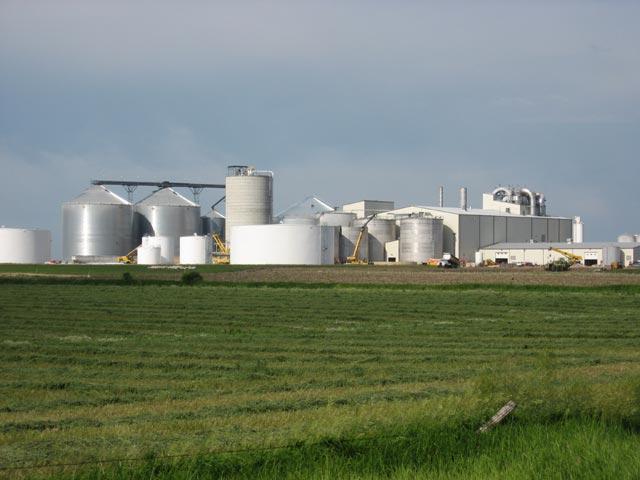Ethanol: Off the radar, but bigger than ever
This ethanol plant is in Turner County, S.D. For the first time last year, more corn was used for ethanol than livestock feed. (Photo courtesy of Alexius Horatius via Wikimedia Commons.)
In 2007, ethanol was touted as an answer to America’s growing energy needs. Today the gasoline alternative is rarely mentioned.
But not because it’s not being used in great amount. The hype is gone, but ethanol production has gotten bigger than ever. Factories are working over capacity to churn out enough ethanol to fuel a growing demand.
Micheline Maynard, senior editor of the public media project Changing Gears and blogger at Forbes.com, said we are in an ethanol boom period.
“Back in 2007 when the ethanol interest began, the government said that by now about 30 percent of the corn supply in the country would be used for ethanol production. They thought that would be about 11 billion gallons of fuel,” Maynard said. “We’re actually using 40 percent of the corn supply for ethanol, and it’s almost 14 billion gallons. We’re now using more corn to produce fuel than to feed livestock.”
Maynard said the demand for ethanol has gone up because it has become integrated into standard fuel.
“People probably don’t know that regular gasoline is about 10% ethanol, so there’s ethanol in all our cars.”
At an ethanol refinery in Michigan, refinery CEO Mitch Miller said he is staying busy.
“This was built as a 40 million gallon plant,” Miller said. “We’re running at 50 million gallons per year. So we have not reduced capacity at all.”
Despite the growing demand for ethanol, Maynard cautioned the gasoline alternative has some drawbacks.
“Ethanol actually takes a lot of energy to produce. And that was something environmentalists brought up back in the late part of the last decade,” Maynard said. “The other thing that people need to know is that if you’re going to drive your car based on ethanol, you’re going to get not as good fuel economy. You’re not going to get the same kind of performance.”
The future of ethanol production is unknown, but Maynard thinks the industry will continue to experience growth as long as ethanol remains affordable.
“It will depend on what happens with gasoline prices. That’s the bottom line for everybody involved in the energy business,” he said. “If gas prices go way up above $4 a gallon, we will probably be talking about ethanol on a future program.”
